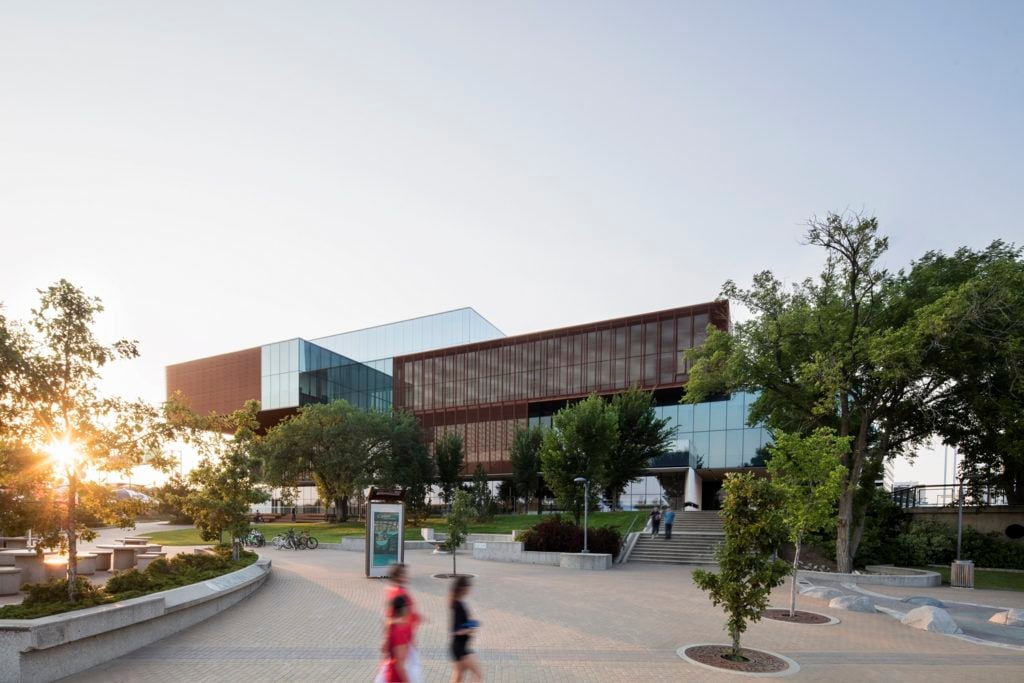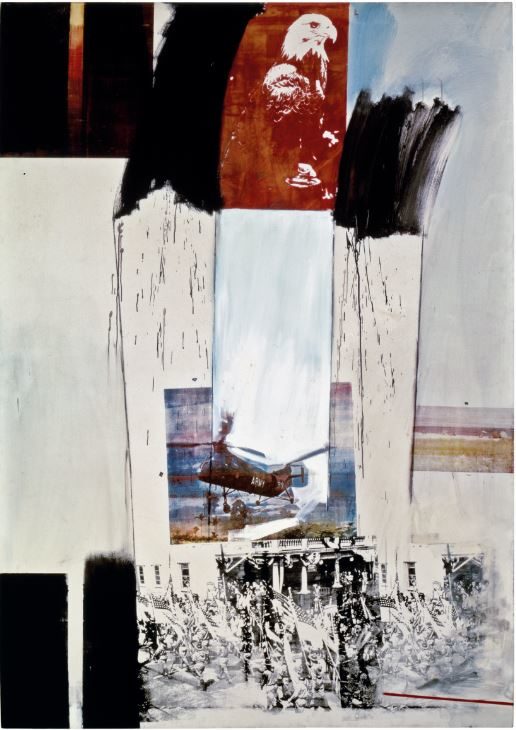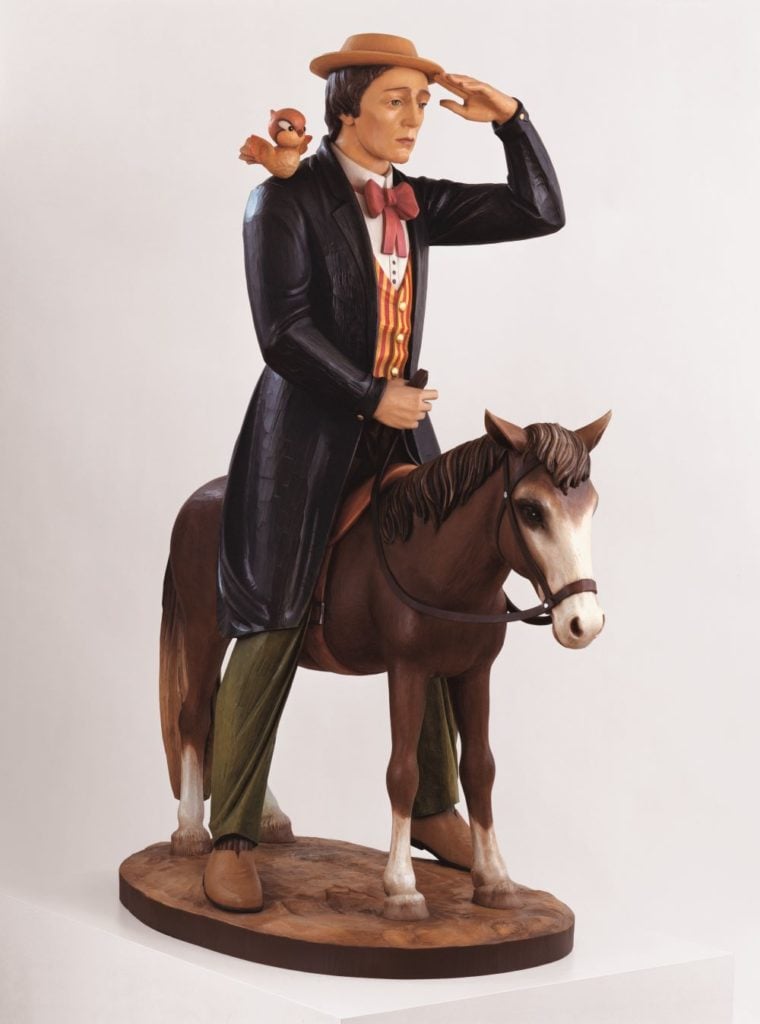On View
Ileanna Sonnabend’s Son Has Curated a Blockbuster Show in Canada From the Legendary Dealer’s $1 Billion Collection
The show is up now at the Remai Modern in Saskatoon.

The show is up now at the Remai Modern in Saskatoon.

Eileen Kinsella

The two-year-old Remai Modern museum on the banks of the South Saskatchewan River in Saskatoon, Canada, has landed a spectacular show of works from the collection of the late dealer Ileanna Sonnabend. The sweeping survey, which is open through March 22, 2020, includes more than 100 works by 68 artists ranging from Pop art, Minimalism, Nouveau Realism, Abstract Expressionism, Arte Povera, and more.
When the museum, which is armed with an $81 million pledge from namesake patron Ellen Remai and a $1 million-per-year acquisition budget for the next 25 years, reached out to Antonio Homem, Sonnabend’s adopted son and director of the Sonnabend Collection Foundation, he immediately seized the opportunity.
Homem curated the show according to loose groupings of movements, though he doesn’t hesitate to put works side by side when he sees connections, regardless of when they were created. “There is always something that works if each piece has a strength of its own,” he said, pointing out unexpected links like the day-glo colors of a Peter Halley painting and Andy Warhol’s neon-hued “Flowers.”
The show opens with works by Jasper Johns and Robert Rauschenberg, the first two artists Sonnabend showed at her Paris gallery as part of a broader effort to introduce American artists in Europe as well as European artists in New York. The first two rooms “show an evolution of Pop art, from works still linked to Abstract Expressionism, to works that have more in common with Minimalism,” Homem says.
There are quite a few works by Jeff Koons on view, an artist who Sonnabend championed early on and helped catapult to global fame, starting in the 1980s. Along with a metal sculpture, Snorkel (1985), there is a Mermaid Troll (1986), the famous wood sculpture of Buster Keaton (1998), and a more recent sculpture Gazing Ball (2014). In the same room, 1980s art stars Ashley Bickerton and Haim Steinbach also get a nod.

Exterior view of Remai Modern, seen from the adjacent Meewasin Valley Trail in Saskatoon. Photo by Adrien Williams.
Koons’s Gazing Ball is one of the few works Homem added to the collection after Sonnabend’s death in 2007. Another more recent addition is by artist Ryan Roa, whose torqued metal Expanded Steel Knot 3 (2015) fits nicely in a room alongside a neon sculpture by Bruce Nauman, Raw War (1972) and a painting by Jörg Immendorf, Ewiges Braunhemd (1983).
The second half of the show reflects a heavy focus on photography—including works by Gilbert and George, Hiroshi Sugimoto, Bernd and Hilla Becher, John Baldessari, and Candida Höfer, among others—and a sprinkling of works that Homem broadly terms “weird.” The latter includes a Rona Pondick sculpture of a sphinx-like figure with a dog body and a human head and Richard Artschwager’s Double Diner (1988), a restaurant booth coated in green rubberized hair. When it comes to strange, uncanny, or just plain “weird” works, Homem says “I don’t think we looked for it necessarily but clearly it is a quality that interested us.”

Robert Rauschenberg, Kite (1963). Courtesy of the Sonnabend Collection Foundation and Antonio Homem. © Robert Rauschenberg Foundation / SOCAN, Montreal / VAGA at Artists Rights Society (ARS), New-York (2019).
Homem has organized earlier shows of the late dealer’s holdings, including a two-part exhibition at the Serralves Museum of Contemporary Art in 2016. The Remai Modern show marks the first time the collection has been shown on this scale in North America.
Sonnabend was famous for staging groundbreaking shows such as Vito Acconci’s Seedbed, in which the artist laid under wooden planks in the gallery floor and masturbated throughout the exhibition opening, and Jeff Koons’s “Made in Heaven” series, which featured graphic depictions of the artist and his then-wife Ilona Staller in various sexual positions.

Jeff Koons, Buster Keaton (1988). Image courtesy of the Sonnabend Collection Foundation and Antonio Homem, © Jeff Koons.
When Sonnabend died in 2007, Homem and Sonnabend’s daughter Nina Sundell inherited an estate in which the artwork alone was valued at over $1 billion. In order to pay the estate taxes—the federal portion of which was $331 million, largely for the art—the heirs sold off some $600 million worth of art in two major private sales to dealers. The first batch, worth about $400 million, was reportedly sold to GPS Partners, based in New York and Paris, which is headed by private dealers Franck Giraud, Lionel Pissarro, and Philippe Ségalot. The second, said to consist entirely of works by Warhol, was sold to Gagosian Gallery for $200 million.
“Through these two sales, the collection lost a few very important works, but it was still the same collection,” Homem said in an interview in the catalogue that accompanies the show. “I never had any doubt that the works would be preserved in one way or another, being recognized and important pieces.”